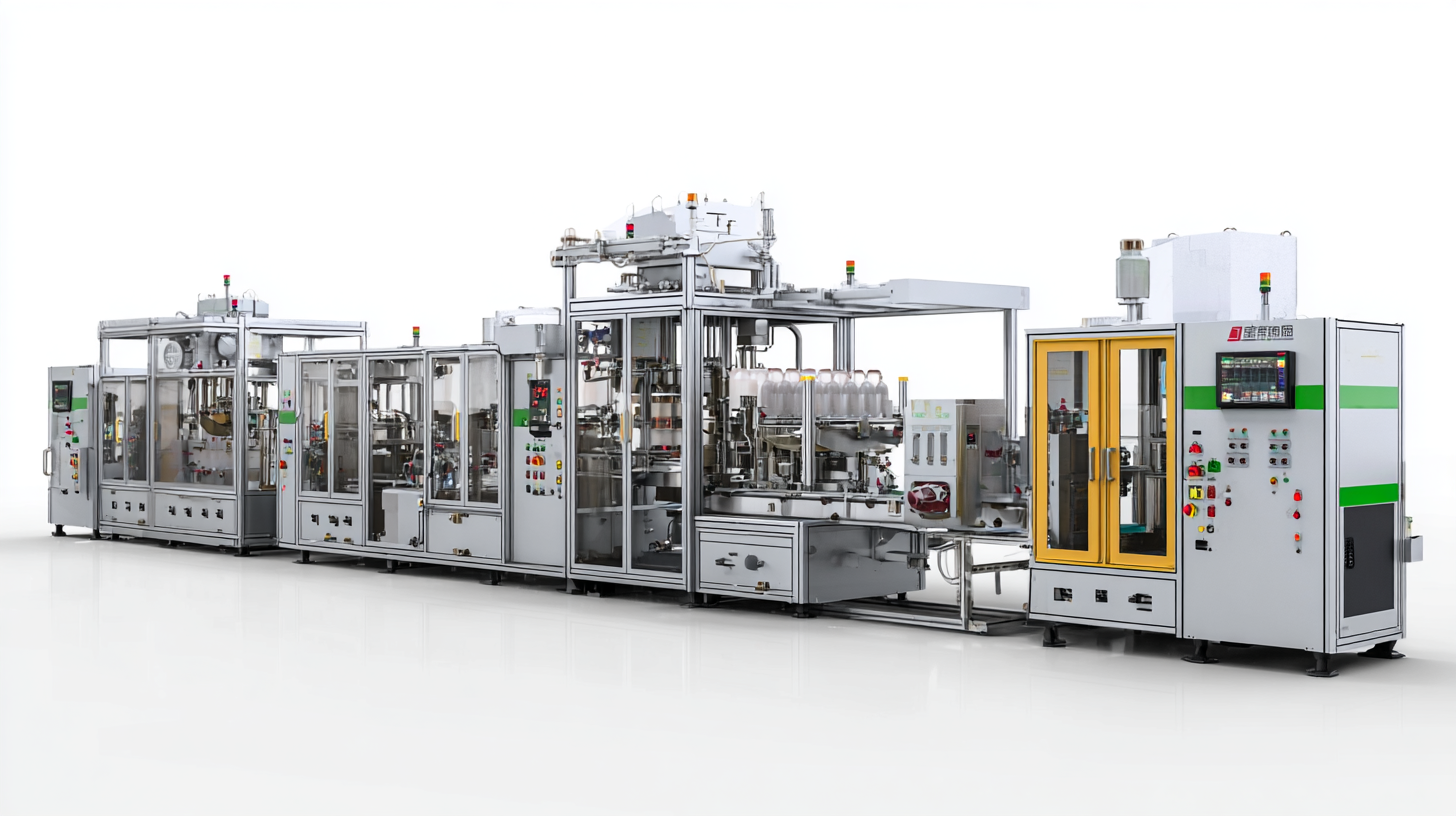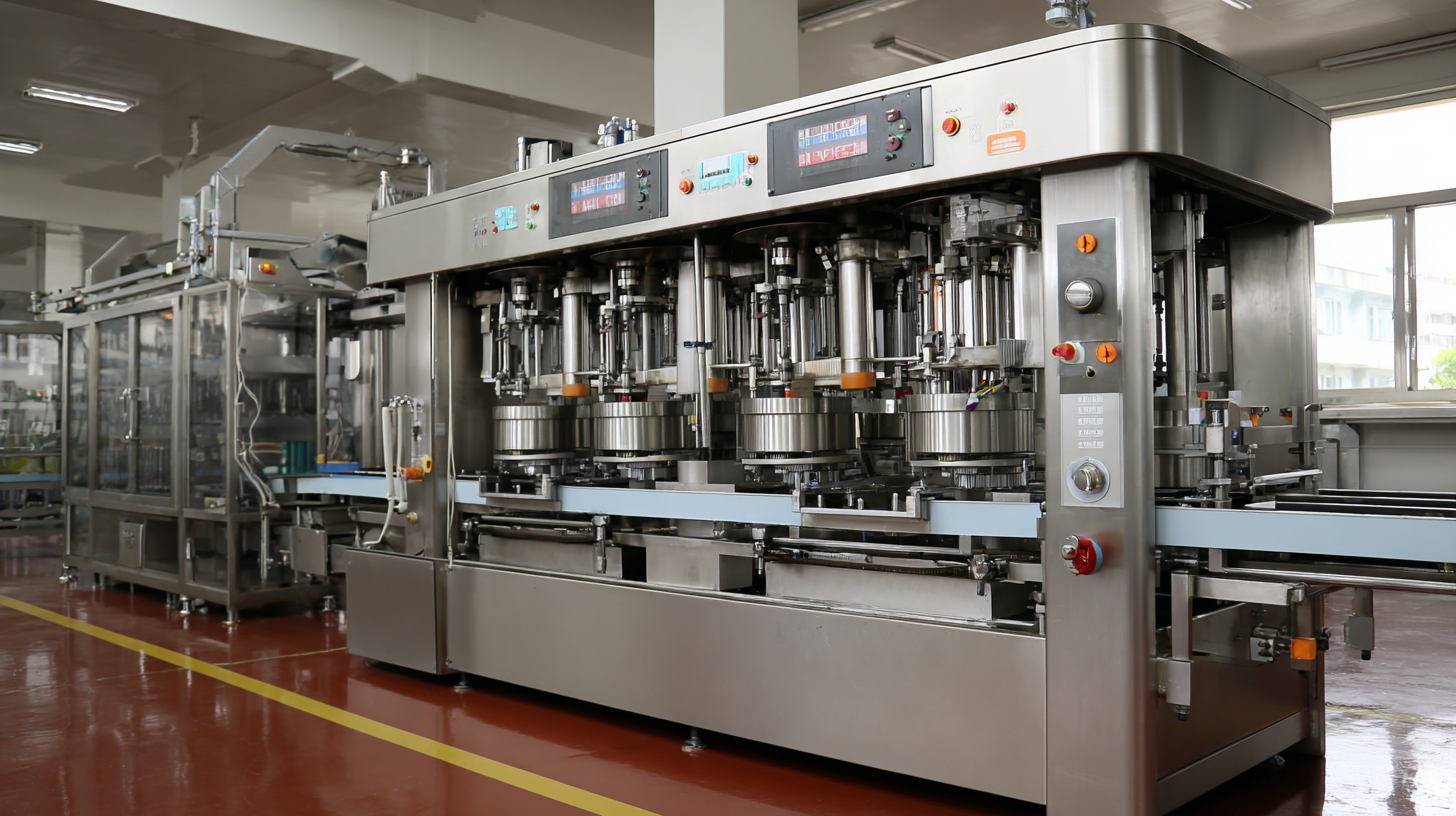How to Choose the Best Liquid Packaging Machine: Trends Shaping the Industry by 2025
In the ever-evolving landscape of the packaging industry, choosing the right liquid packaging machine is crucial for businesses aiming to enhance efficiency and meet market demands. With advancements in technology and changing consumer preferences, understanding the trends shaping the liquid packaging sector by 2025 is essential for making informed decisions. This blog delves into critical insights and market analysis that will guide you in selecting the best liquid packaging machine for your operational needs. From sustainable materials to automation advancements, we will explore how these factors not only influence productivity but also ensure compliance with industry regulations. Join us as we navigate through the intricate world of liquid packaging, where the right machinery can make all the difference in driving success for your business.

Emerging Technologies in Liquid Packaging Machines by 2025 and Their Impact on Efficiency
As the liquid packaging industry evolves, emerging technologies are set to revolutionize efficiency by 2025. According to a recent report by MarketsandMarkets, the global liquid packaging market is projected to reach USD 500 billion by 2025, driven by increased demand for convenience and sustainable packaging solutions. Innovative technologies, such as automated filling systems and smart packaging, are making significant strides in improving production speeds and reducing material waste.
One major trend shaping this landscape is the integration of IoT (Internet of Things) into packaging machinery. By leveraging real-time data, manufacturers can optimize their operations, leading to a potential reduction in downtime by 15%, as cited in a study by McKinsey. Additionally, advancements in materials science are leading to the development of biodegradable films and lightweight packaging options, which not only enhance sustainability but also lower transportation costs. These trends underscore the necessity for businesses to adopt cutting-edge liquid packaging machines to stay competitive and meet consumer demands for efficiency and eco-friendliness.
How to Choose the Best Liquid Packaging Machine: Trends Shaping the Industry by 2025 - Emerging Technologies in Liquid Packaging Machines by 2025 and Their Impact on Efficiency
| Dimension | Current Trends (2023) | Predicted Changes by 2025 | Impact on Efficiency |
|---|---|---|---|
| Automation | High adoption rate for packaging lines | Increased use of AI and robotics | Reduction in manual errors; faster production rates |
| Sustainability | Growing demand for eco-friendly materials | Shift towards biodegradable and recyclable packaging | Improved brand image and reduced waste |
| Smart Technology | Integration of IoT for real-time monitoring | Enhanced data analytics for performance optimization | Increased uptime and predictive maintenance capabilities |
| Customization | Demand for customizable packaging solutions | Higher flexibility in production lines | Enhanced customer satisfaction and reduced inventory costs |
| Speed & Efficiency | Focus on rapid production systems | Advanced mechanics to further boost speed | Higher output rates and reduced operational costs |
Key Market Trends Influencing Liquid Packaging Equipment Choices and Investments
The liquid packaging industry is undergoing transformative changes driven by evolving consumer preferences and technological advancements. One major trend influencing equipment choices is the rising demand for sustainability. More companies are investing in eco-friendly packaging solutions, such as biodegradable materials and recyclable designs, to align with global sustainability goals. As consumers become more environmentally conscious, packaging machines that can efficiently handle these materials are in high demand.
Another significant trend is the automation of liquid packaging processes. As manufacturers seek to enhance operational efficiency, the integration of smart technology and robotics is becoming essential. Automated systems not only streamline production but also improve accuracy and reduce waste. With the latest innovations, businesses are looking for packaging machines that offer flexible configurations and can adapt to different production volumes and product types, ensuring they stay competitive in a fast-evolving market.
Trends Influencing Liquid Packaging Equipment Choices (2023 - 2025)
Sustainability in Liquid Packaging: Consumer Preferences and Regulatory Changes
As consumers become increasingly eco-conscious, sustainability in liquid packaging has transformed from a trend to a necessity. Modern consumers are actively seeking products that use recyclable materials, biodegradable options, and innovative designs that reduce waste. This shift in consumer preferences is influencing manufacturers to prioritize sustainability in their packaging solutions. Brands that embrace this environmentally friendly approach can not only attract a broader audience but also enhance their reputation and credibility in the market.
Alongside changing consumer preferences, regulatory changes are also driving the industry toward greater sustainability. Governments around the globe are implementing stricter regulations aimed at reducing plastic waste and promoting environmentally friendly materials. These changes encourage manufacturers to invest in state-of-the-art liquid packaging machines that can handle sustainable materials efficiently. By adhering to these regulations and aligning with consumer demands, companies can ensure they remain competitive, compliant, and committed to a greener future. The convergence of consumer preferences and regulatory demands is thus a pivotal trend shaping the liquid packaging landscape by 2025.
Market Growth Projections for Liquid Packaging Machines: Insights and Forecasts
The global liquid packaging machine market is experiencing significant growth, driven by the rising need for efficient and sustainable packaging solutions across various industries. According to market projections, the liquid filling machines market size is expected to leap from $6.82 billion in 2025 to approximately $10.39 billion by 2032, reflecting a compound annual growth rate (CAGR) of 6.2%. This surge is largely attributed to the increasing demand for liquid products in sectors like food and beverages, cosmetics, and pharmaceuticals.

Furthermore, the broader beverage packaging market is set to expand notably, with estimates indicating growth from $147.2 billion in 2025 to $201.7 billion by 2035. Such robust growth highlights the essential role of liquid packaging machinery in meeting the needs of diverse markets. As brands seek lightweight and compact packaging options, advancements in technology, sustainability practices, and consumer preference for convenience will continue to shape the industry landscape heading towards 2025 and beyond.
Factors Driving the Adoption of Automated Liquid Packaging Solutions in Various Industries
The liquid packaging machine industry is experiencing significant changes, driven by a variety of factors that are shaping its future. One of the primary trends is the increasing demand for automated liquid packaging solutions across different sectors, including food and beverage, pharmaceuticals, and personal care. As industries aim to enhance efficiency and reduce operational costs, the shift towards automation becomes imperative. This transformation not only streamlines the packaging process but also improves accuracy and reduces the risk of contamination, making automated systems highly desirable.
Moreover, the growing emphasis on sustainability is another factor influencing the adoption of liquid packaging machines. Companies are increasingly looking to incorporate eco-friendly materials and processes, aligning with consumer preferences for environmentally responsible products. The utilization of materials like biodegradable plastics and glass is gaining traction, and packaging machines that can accommodate these materials are becoming essential. As the liquid filling machines market continues to evolve, industry players must navigate these trends to meet consumer expectations while remaining competitive in a rapidly changing landscape.


